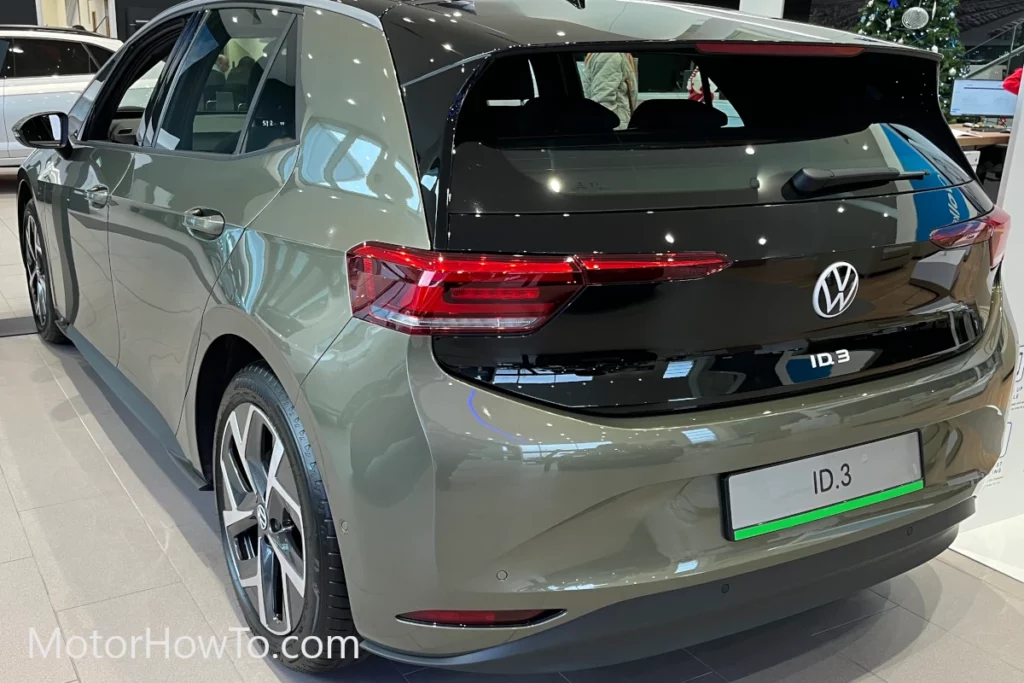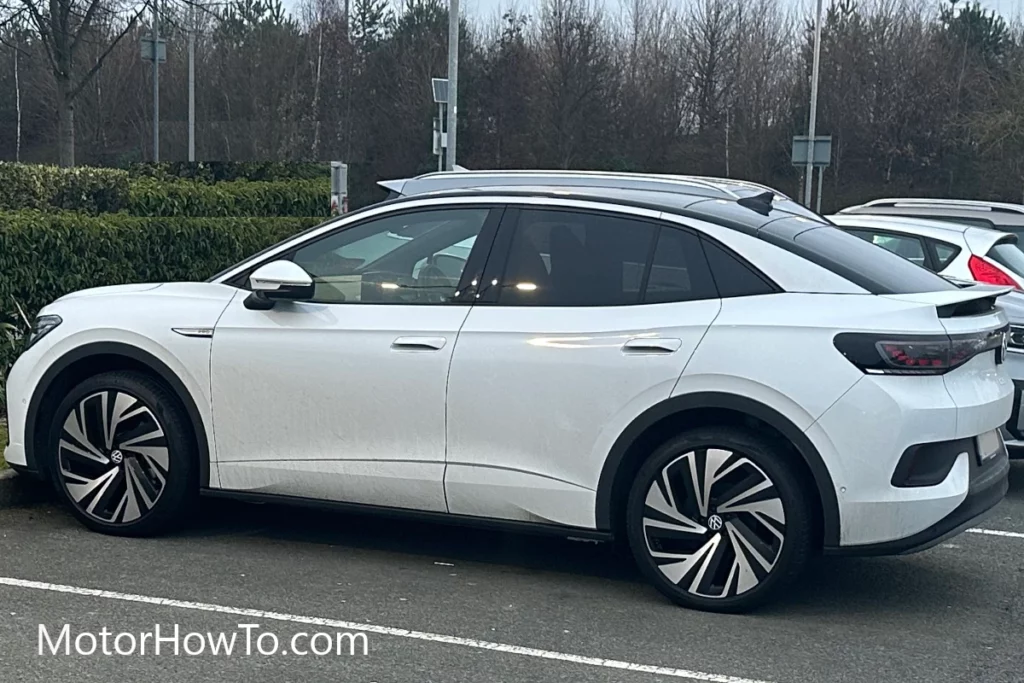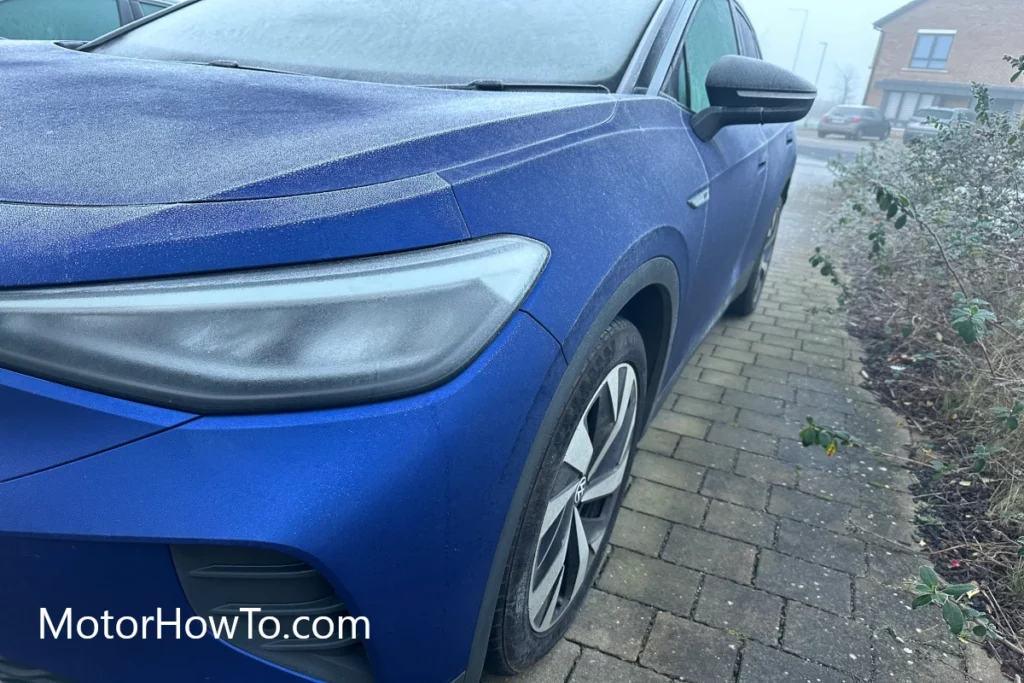Have you ever wondered what are the major parts or components that make the car? When you look at your car, have you ever wondered how the car works and what is inside?
The car is made of thousands of parts but we will try to break it down into 6 major parts or distinct components to make it easy for you to understand, but at the same time cover each of the car parts in detail.
Read on to find out the anatomy of a car.
Here Are The 6 Major Parts That Make A Car
The 6 major parts or components of the car include Body & Exterior, Engine & Propulsion, Handling & Wheels, Interior & Electronics, Technology & Connectivity, and Security & Safety.
- Car Body & Exterior
- Car Engine & Propulsion
- Car Handling & Wheels
- Car Interior & Electronics
- Car Technology & Connectivity
- Car Security & Safety
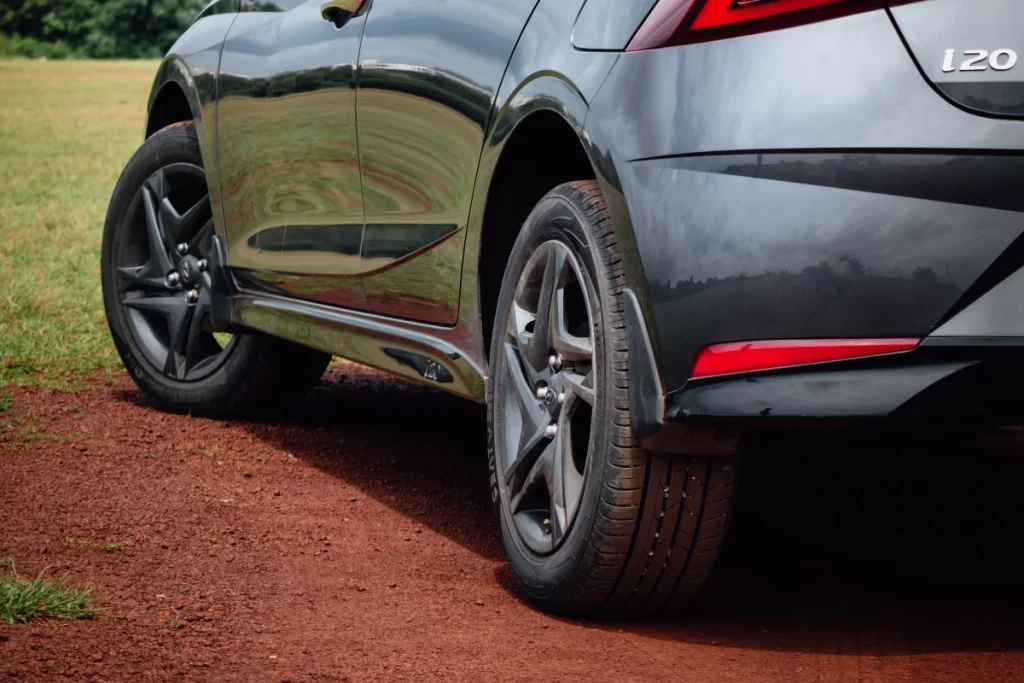
The 6 major parts listed below are a very simplified view of the car, but let’s dive deep into it to find out exactly what each of them entails.
1. Car Body & Exterior
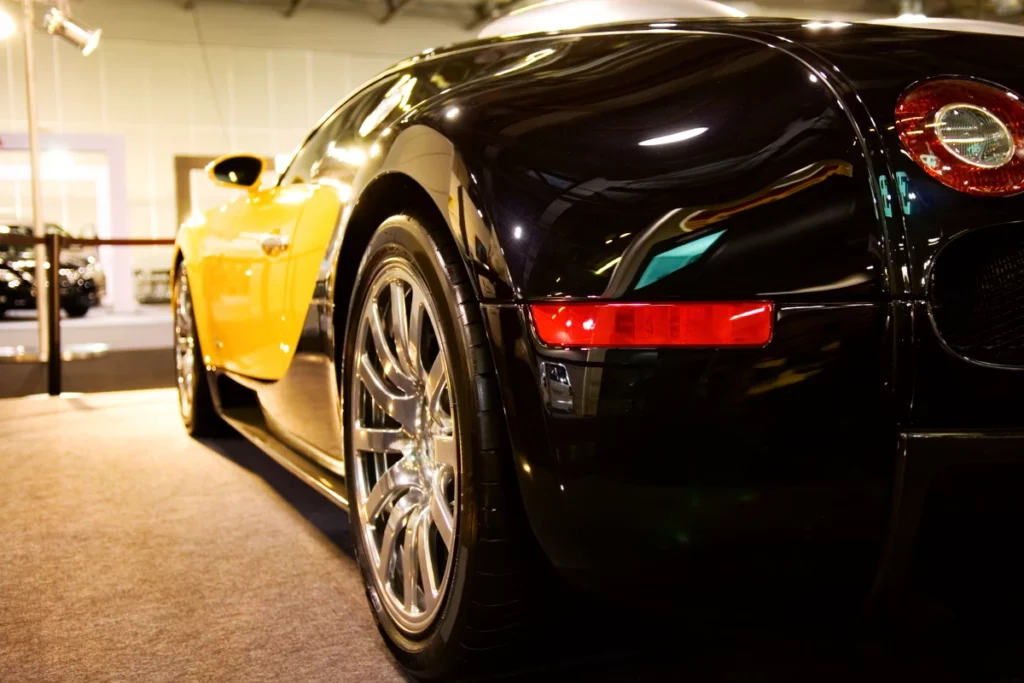
The car’s body and exterior are what protects the diver and passengers from crash or bumps and include a series of safety features.
Below are the major parts that make up the Car Body & Exterior:
Chassis & Frame
The car chassis is a strong metal skeleton or foundation of the car that takes the load and stress as the car propels, and holds the car frame together. The car frame is what gives the shape of the car. All components of the car are attached to the car frame.
| Car Chassis & Frame Components | Car Chassis & Frame Component Description |
|---|---|
| Body Panel | Car body panels are large steel sections that are installed around the car, used to cover car parts, and designed in such a way that they can provide additional safety from collisions. There are different types of panels available today such as a Roof panel, Hood lid panel, Bumper panel, Fender panel, Header panel, Trunk/Boot panel, Valance panel, Cowl panel, Low door skin, Wheel arch panel, Quarter panel, and Firewall. |
| Trunk or Hood | The trunk or boot is the main storage area in a car that protects and safely stows away your language. |
| Front and Rear End Module | The car front and rear end modules are mainly for safety reasons that play a vital role in absorbing the impact during the collision as they are likely to be first in contact. |
| Body Reinforcement/protector | Car body reinforcements are additional high-strength metal to prevent the car frame from deformation during impact. These reinforcements or protectors are placed strategically that adds to the safety of the car passages. |
| Bumper | A car bumper is a protective part of the car exterior placed at the front and rear to absorb any impact from collisions. |
Access & Visibility
Passengers need access to the car, so doors provide access while windows provide visibility. The cars need to make themselves visible to other drivers and pedestrians too which is where the various lights help with that function.
| Car Access & Visibility Components | Car Access & Visibility Component Description |
|---|---|
| Doors | The car door is used to enter to leave the car by the driver and passages. A car usually has front and back doors on both driver’s and passenger’s sides. |
| Windows | Car window glass allows the driver and passenger to view the surrounding. The front glass that protects the driver and passengers is called the windshield and the rear is called the back glass. There is also front and rear door window glass which you can roll up and down. The other type of window glass is vent glass or quarter glass. |
| Wiper | A wiper is used to wipe away excess rainwater from the windshield to give the driver a clear front view of the road. Some cars also have headlamps and rear wipers. |
| Window Washer | A car window washer is used to spay window washer fluid on the windshield to remove the mud or debris and clear the driver’s vision. |
| Sunroof | A sunroof is an openable window on the roof of a car to allow sunlight and fresh air while driving. |
| Outside Mirror | Outside or wing mirrors are key components of a car used to view the rear and side (left & right) of the car. |
| Weather Strip | A weather strip or weather seal is a rubber seal that prevents external elements (wind, rain, snow, insets, etc) from entering the cabin of the car. |
| Gas spring | Car gas springs are used to softy open and close the bonnet to the trunk of the car. |
| Exterior Lighting | Exterior car lamps or lights play an important role in car safety because it is used to be visible or signal to other drivers. The different types of lamps or lights in a car exterior are headlights, tail lights, fog lights, daytime running lights, signal lights, hazard lights, and brake lights. |
| Horn | A car horn is an alerting device to grab the attention of other road users by making a loud sound. |
| Key Set | A car key set is used to open the car doors and start the engine. Modern car keys are smart keys that have enhanced security features and are battery-operated. |
2. Car Engine & Propulsion
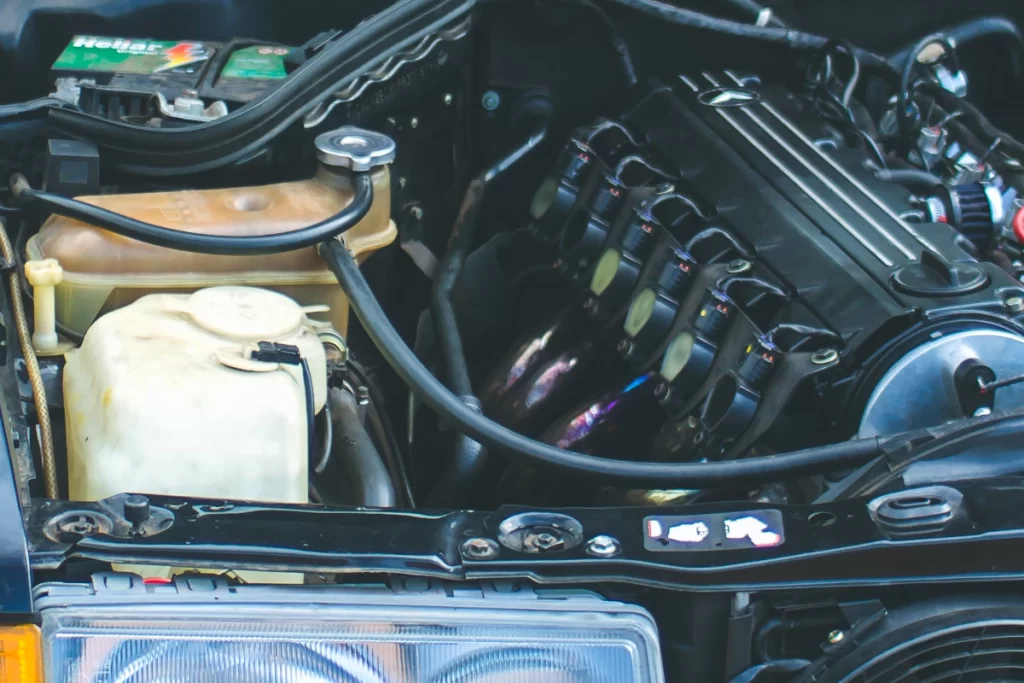
Below are the major parts that make up the Car Engine & Propulsion:
Car Engine
A car engine is what created the power to propel the car.
| Car Engine Components | Car Engine Component Description |
|---|---|
| Fuel System | The fuel system in a car is responsible to store and supply the fuel to the engine at the right amount for smooth functioning. |
| Ignition System | The ignition system in a car is what fires up the engine by igniting the fuel and air mixture at a push of a button |
| Electrical System | The electrical system in a car generates electrical power (alternator) and stores it in a battery for a constant supply. |
| Exhaust system | The car exhaust system helps emit the burnt residual fuel & air (harmful hydrocarbons) in the engine to safely direct away from the driver and passengers while purifying the harmful emissions in the process. It also helps with the optimum performance of the car and keeps the noise levels down. A car exhaust system is made of a Manifold, Catalytic Converter, Resonator, Catback, Muffler, and Tailpipe. In addition, it includes various sensors in the system such as an O2 sensor to keep a check on polluted fumes. |
| Cooling system | A cooling system is used in a car to keep the engine cool from overheating. It includes a radiator, fan, thermostat value & water pump. |
Car Drivetrain
A car’s drivetrain system consists of a clutch, gearbox, transmission, and differential.
| Car Drivetrain Components | Car Drivetrain Component Description |
|---|---|
| Transmission | A car transmission is a system that converts the engine’s horsepower to the wheels. |
| Driveshaft | A driveshaft converts the torque from the transmission and transfers it to the differential and gearbox. |
| Differential | A differential is used to turn the wheels at different speeds during turning i.e inside wheel turns slower than the outside wheel. |
| Axles | An axle is a horizontal rod that connects two parallel wheels to a differential. |
| Gearbox | A gearbox is a system that is used to change the speed of the car. |
| Clutch (Manual Transmission) | A clutch sits between the engine and the transmission. It helps disengage the engine when changing gears. |
| Flywheel (Manual transmission) | A flywheel is a disc that converts the rotational energy and transfers it to the gear |
| Torque converter (Automatic transmission) | A torque converter is used in an automatic transmission car to transfer power from the engine to the transmission |
| CV Joints | A CV joint is a mechanism that allows constant rotational speed to transfer at a variable angle. |
| Pedal | A pedal is used by the driver to press and release the clutch or brakes. |
3. Car Handling & Wheels

The car’s brakes and wheels are responsible for moving the car from breaking and moving the car on the road.
Below are the major parts that make up the Car Handling & Wheels:
Car Handling
Car handling refers to a vehicle’s ability to maneuver and respond to driver inputs, such as steering and braking. It includes the vehicle’s stability, balance, and control while driving at different speeds and in various conditions. Factors that affect car handling include the suspension, steering, tires, and aerodynamics of the vehicle. A car with good handling will be able to maintain stability and control at high speeds and through tight turns, allowing the driver to have more confidence in the vehicle’s capabilities. A car with poor handling may feel unstable, difficult to control, and may not respond well to driver inputs
| Car Handling Components | Car Handling Components Description |
|---|---|
| Braking systems | A car’s braking system is used to control and reduce the speed of a moving car by locking the wheels when the driver pushes the brake pedal. |
| Suspension System | The car suspension system is a mechanical system that connects the wheels to the vehicle’s frame and is responsible for providing a smooth and comfortable ride by absorbing shocks and vibrations from the road, while also maintaining the tire’s contact with the road surface for proper handling and traction. |
| Steering System | The car steering system allows the driver to control the direction of the vehicle by linking the steering wheel to the front wheels through a series of mechanical or electronic components, such as a steering rack, steering gear, and tie rods. |
Car Wheels
| Car Wheel Components | Car Wheel Components Description |
|---|---|
| Wheels | Wheels are what make the car move forward as it rotates depending on the engine’s power |
| Tires | A tire is a part that makes contact with the road and provides traction |
4. Car Interior & Electronics
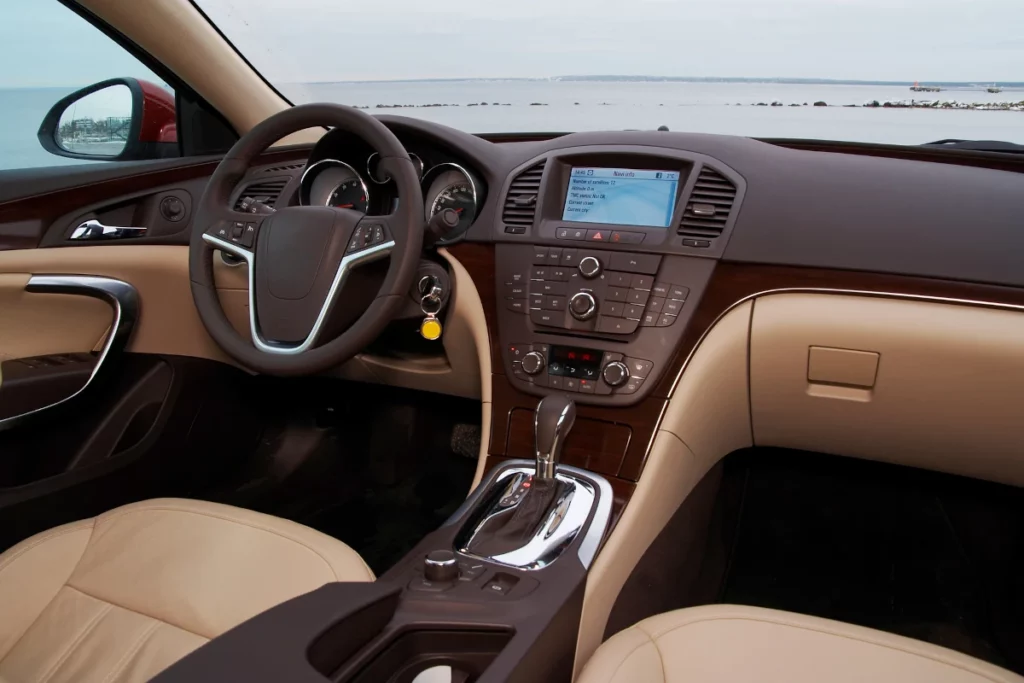
A car’s interior and Entertainment system is used to transfer power from the engine to the wheels and consists of parts such as transmission, driveshaft, axles, differential, and clutch.
Below are the major parts that make up the Car’s Interior & Electronics:
Car Interior
The car interior is the inside of the vehicle that includes seats, trim, comfort controls, etc
| Car Interior & Electronics | Car Interior & Electronics Description |
|---|---|
| Seats and Trim | Car seats are where the driver and passages sit while traveling and the trim adds customized luxury based on the owner’s preference |
| HVAC (Heating, Ventilation, and Air Conditioning) System | HVAC system includes climate control that helps regulate the air inside the car cabin |
| Dashboard & Instrument Panel Assembly | Dashboard and Instrumentation Panel Assembly help check the status a control various components of the car. |
Car Electronics
The car entertainment system is built to entertain the driver and passenger to make the journey exciting
| Car Electronics Components | Car Electronics Components Description |
|---|---|
| Car Audio System | A car audio system is used to play music in the car based on various sources available today |
| Car Video System | A car video system is usually for passengers to enjoy video content |
| Car Infotainment System | An Infotainment system is a combination of Information systems such as a navigation system and an entertainment system such as car speakers to get navigational audio prompts |
5. Car Technology & Connectivity
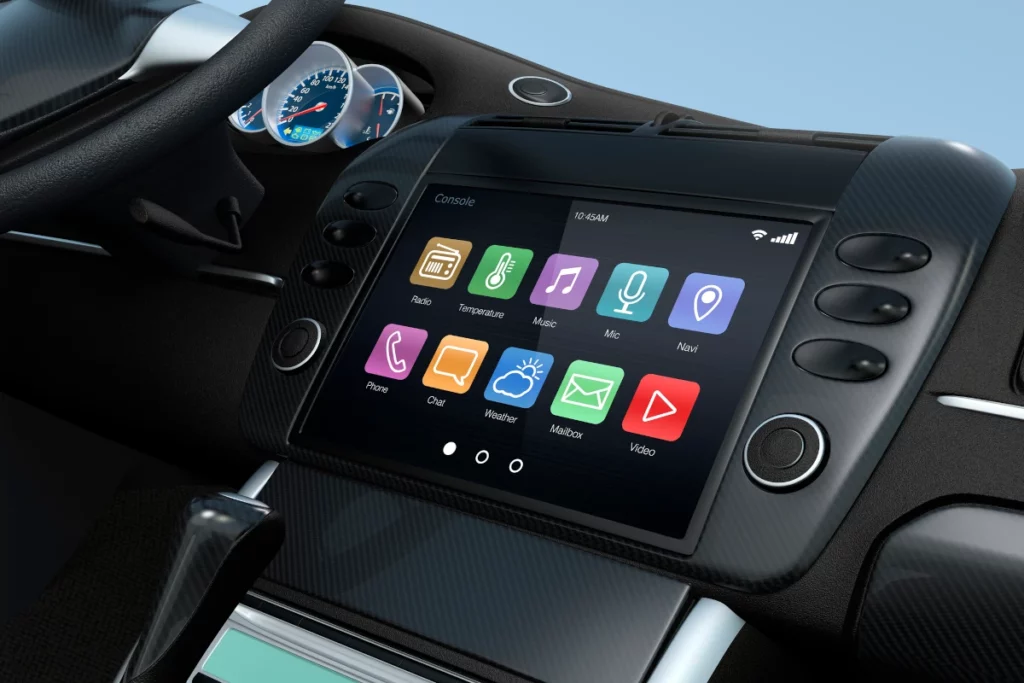
The car Technology & Electronics includes a series of controls and dashboards for the driver to safely drive the car along with making the driver and passengers’ journey pleasant.
Below are the major parts that make up the Car’s Technology & Electronics:
Car Technology
A modern car is full of driver technology these days that improve the performance of the car and assists the driver to have an enjoyable ride.
| Car Technology Components | Car Technology Components Description |
|---|---|
| Sensor technology | Sensors are used with the help of cameras, radar, and ultrasonic to improve the driving experience |
| Telematics technology | Telematics such as GPS and cellular communication to provide real-time information and remote control of the car. |
Car Connectivity
Car electronics is where mechanical systems in the car are replaced by an electronic system to improve the performance and life of the car.
| Car Connectivity Components | Car Connectivity Components Description |
|---|---|
| Vehicle Dynamic Control (VDC) System | The Vehicle Dynamic Control (VDC) system is an electronic stability control system that uses sensors to detect a loss of traction and automatically applies the brakes to specific wheels, as well as reducing engine power, to help the driver regain control of the vehicle and improve stability. |
| Traction Control System (TCS) | The Traction Control System (TCS) is an electronic system that monitors the speed of the wheels and applies the brakes to individual wheels, or reduces engine power, to prevent the wheels from spinning excessively and maintain traction on the road surface. |
6. Car Security & Safety
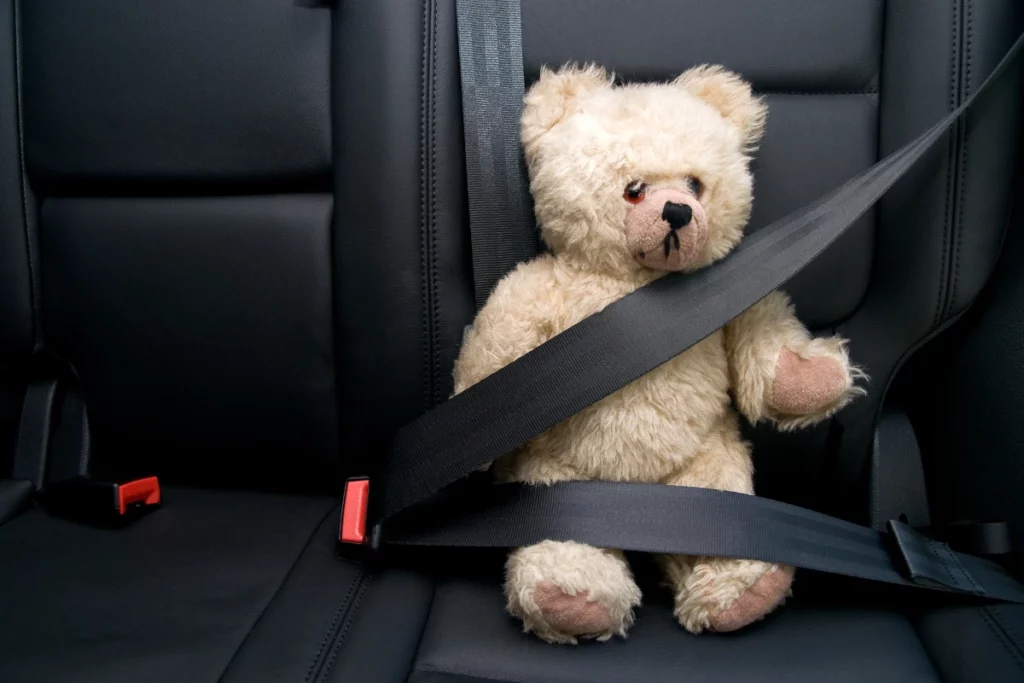
Over the years cars have started using more computing power bringing in smart car Security & Safety as standard.
Below are the major parts that make up the Car’s Security & Safety System:
Car Security
Car security systems are developed to prevent cars from being stolen or an intruder from taking away valuables from the car cabin.
| Car Security Components | Car Security Components Description |
|---|---|
| Immobilizer system | A car immobilizer system is an anti-theft device that prevents the engine from starting unless the correct key or fob is used, by electronically matching a code from the key or fob with the code in the car’s computer, making it difficult for a thief to start the car. |
| Alarm system | A car alarm system is an electronic device that is designed to deter theft and unauthorized entry by emitting loud noises and flashing lights when triggered by a door or trunk opening, glass breakage, or other unauthorized activity. |
Car Safety
Car safety systems are built for the safety of the driver and passengers such as Adaptive Cruise Control, lane assist, etc
| Car Safety Components | Car Safety Components Description |
|---|---|
| Adaptive Cruise Control | Adaptive cruise control varies the speed of your car if you come too close to the car. |
| Lane Assist System | Lane Assist system is an alert system that alerts you if you are drifting away from the lane you are driving |
| Airbag System | An airbag system is a passive safety feature in a vehicle that uses sensors to detect a collision and deploys inflatable bags to cushion and protect the occupants in the event of an accident. |

